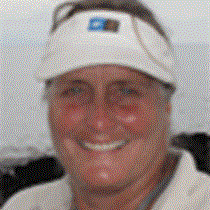Santa Cruz and North Seymour Islands
Today was ANOTHER perfect day! As we rode on buses into the lush, green and very wet highlands at 6:30 a.m., even I was not really too anxious to go off and hike in the cool persistent drizzle of garua. But magically, as we drove down across the farm owned by Miguel Angel Arias and towards the tortoise reserve, the clouds lifted and the sun even peeked out. We stopped the bus to get pictures when we came to a large slow moving tortoise crossing the road. We hiked down a muddy trail through the verdant, thick vegetation, with finches and yellow warblers singing around us, until we came upon the second and third giant tortoises that hissed deeply as they pulled their heads in when we approached. We eventually found more than a dozen of these huge reptiles: some soaking in the mud of El Chato lagoon, others plowing through the tall grasses that surround the lagoon or feeding. We felt privileged to see them in the wild and we were saddened when we learned that these reptiles were once found on several island systems in the world but are now only left in Galápagos and on the island of Aldabra in the Indian Ocean. Unfortunately both their flesh and their eggs are good for eating, so they have been severely decimated by sailors and whalers in the 1800s.
We ducked into a lava tunnel and climbed a quarter of a mile underground to an open air restaurant where we had an enormous, delicious and well-deserved breakfast. Then we boarded the buses and descended to the charming town of Puerto Ayora for a chance to shop.
The afternoon hike along the rocky trail at North Seymour Island was extremely rewarding. We found a few of the last baby blue-footed boobies of the season; most are molting into their juvenile plumage and will soon take off on their first flight. We observed male frigate birds, red balloon pouches puffed to almost bursting, with their wings spread and heads thrown back, all a quiver as they displayed and cooed to females flying overhead. One female apparently liked what she saw and she landed by an exuberant male. And another pair was even further along in their romance: they mated as we watched.
Land iguanas, marine iguanas, sea lions and several of the fearless and lovely Galápagos doves were some of the other species that we watched and photographed. We returned to the ship by Zodiac as the sun set, a brilliant orange ball. We can’t help but wonder what we can possibly see tomorrow that could top this day!
Today was ANOTHER perfect day! As we rode on buses into the lush, green and very wet highlands at 6:30 a.m., even I was not really too anxious to go off and hike in the cool persistent drizzle of garua. But magically, as we drove down across the farm owned by Miguel Angel Arias and towards the tortoise reserve, the clouds lifted and the sun even peeked out. We stopped the bus to get pictures when we came to a large slow moving tortoise crossing the road. We hiked down a muddy trail through the verdant, thick vegetation, with finches and yellow warblers singing around us, until we came upon the second and third giant tortoises that hissed deeply as they pulled their heads in when we approached. We eventually found more than a dozen of these huge reptiles: some soaking in the mud of El Chato lagoon, others plowing through the tall grasses that surround the lagoon or feeding. We felt privileged to see them in the wild and we were saddened when we learned that these reptiles were once found on several island systems in the world but are now only left in Galápagos and on the island of Aldabra in the Indian Ocean. Unfortunately both their flesh and their eggs are good for eating, so they have been severely decimated by sailors and whalers in the 1800s.
We ducked into a lava tunnel and climbed a quarter of a mile underground to an open air restaurant where we had an enormous, delicious and well-deserved breakfast. Then we boarded the buses and descended to the charming town of Puerto Ayora for a chance to shop.
The afternoon hike along the rocky trail at North Seymour Island was extremely rewarding. We found a few of the last baby blue-footed boobies of the season; most are molting into their juvenile plumage and will soon take off on their first flight. We observed male frigate birds, red balloon pouches puffed to almost bursting, with their wings spread and heads thrown back, all a quiver as they displayed and cooed to females flying overhead. One female apparently liked what she saw and she landed by an exuberant male. And another pair was even further along in their romance: they mated as we watched.
Land iguanas, marine iguanas, sea lions and several of the fearless and lovely Galápagos doves were some of the other species that we watched and photographed. We returned to the ship by Zodiac as the sun set, a brilliant orange ball. We can’t help but wonder what we can possibly see tomorrow that could top this day!




